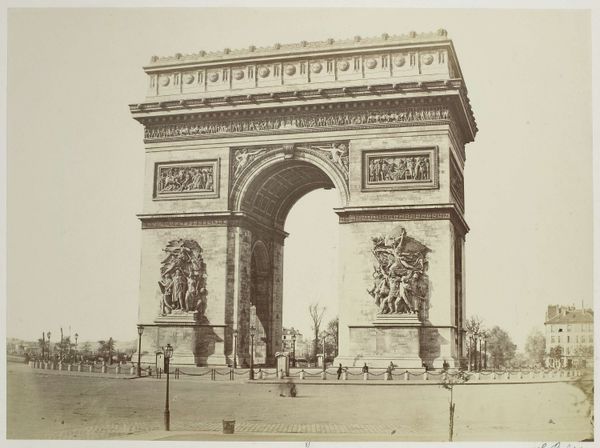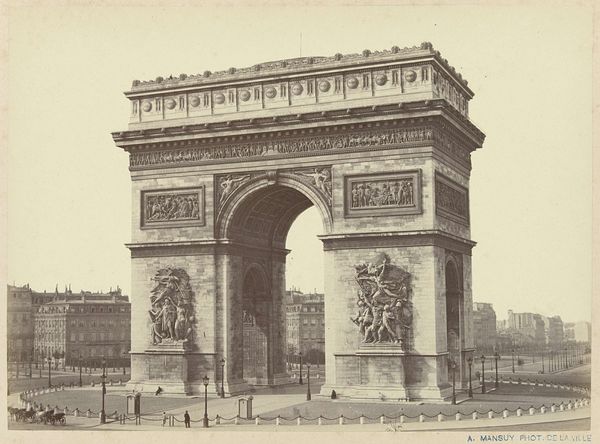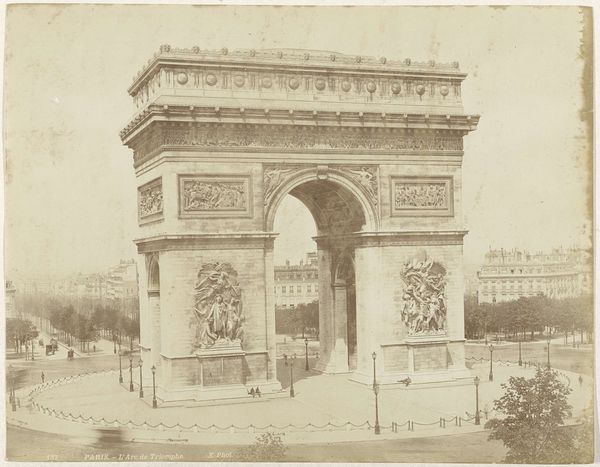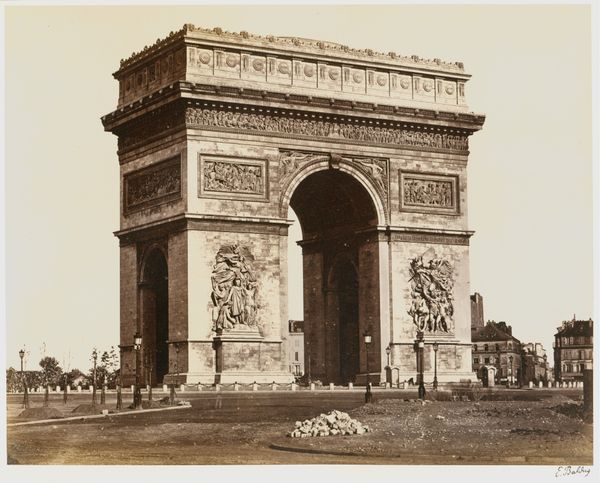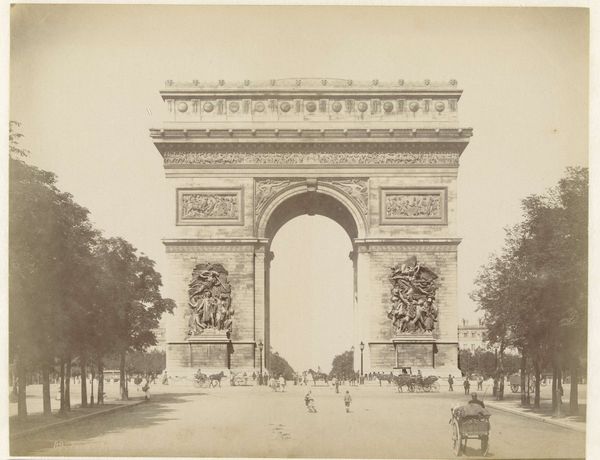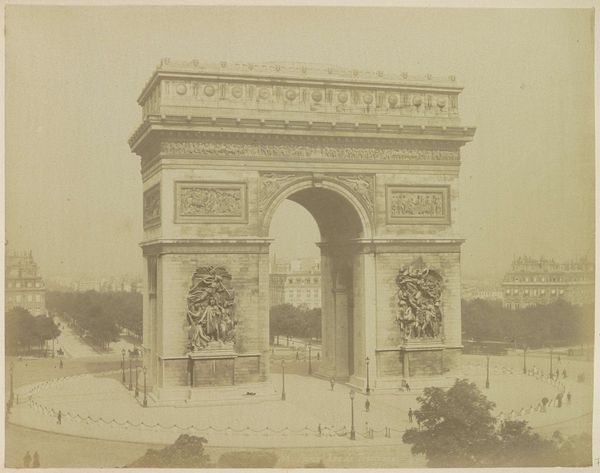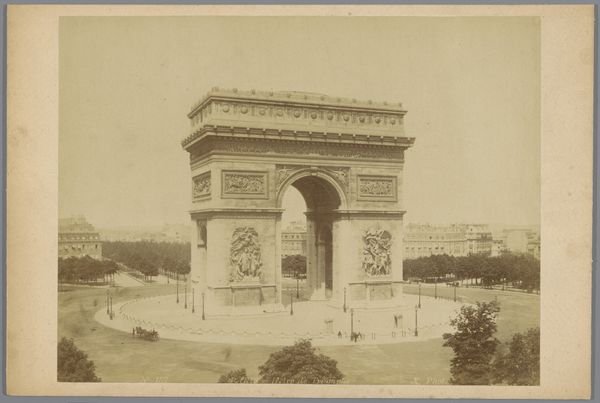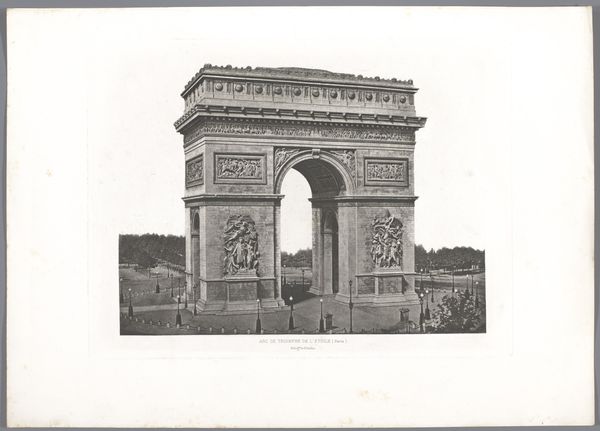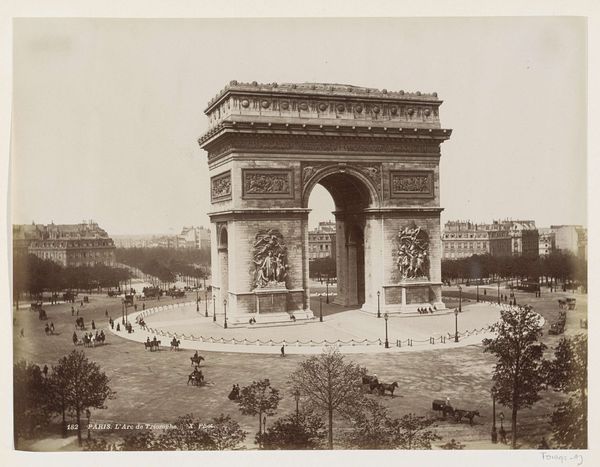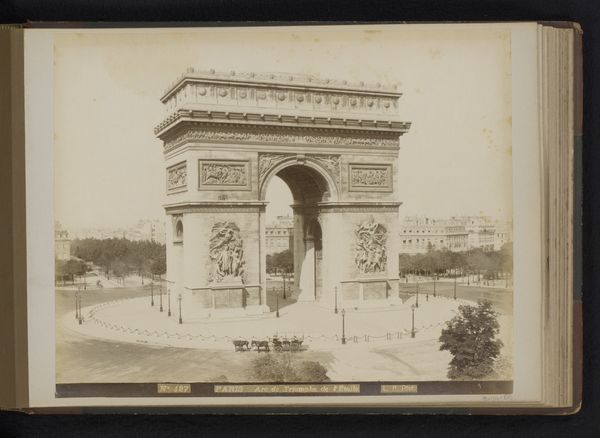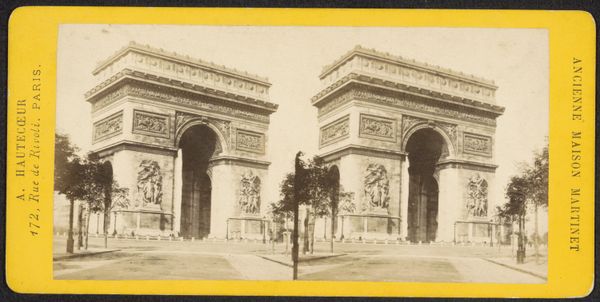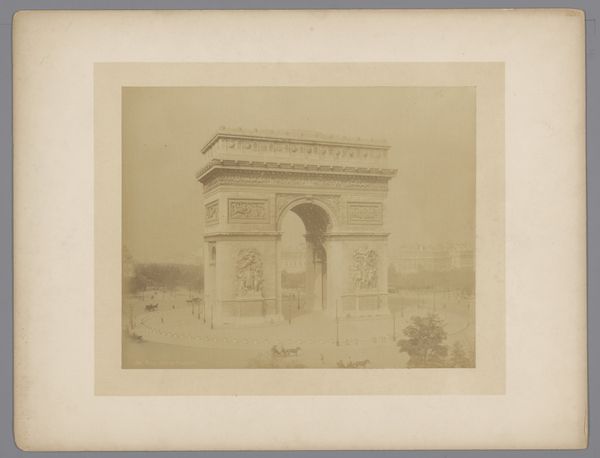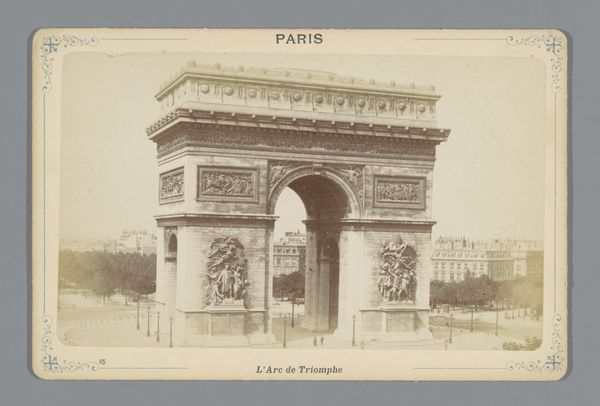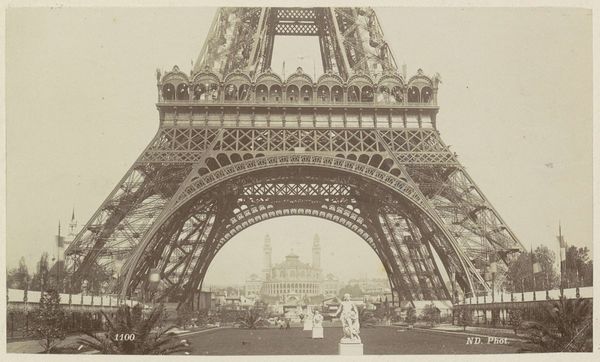
Dimensions: height 198 mm, width 250 mm, height 310 mm, width 430 mm
Copyright: Rijks Museum: Open Domain
Achille Quinet made this photograph of the Arc de Triomphe in Paris sometime in the mid-19th century, using paper and a chemical developing process. The final print gives an incredible amount of detail and tonal variation. Photography was then a relatively new medium and offered a seemingly objective method for capturing the world. It democratized image-making, allowing for the mass production of visual records. Unlike painting or sculpture, photography relied heavily on chemistry and optics, connecting art to scientific progress and industrialization. The Arc de Triomphe itself represents a vast expenditure of labor and resources, built to celebrate military victories and national pride. Quinet's photograph immortalizes this monument, transforming its imposing physical presence into a reproducible image that could circulate widely, further amplifying the monument’s symbolic power. It shows how new media like photography are tied to the wider social issues of labor, politics, and consumption. The photograph’s value lies not only in its aesthetic qualities, but in its role as a cultural artifact.
Comments
No comments
Be the first to comment and join the conversation on the ultimate creative platform.
